Working for a remote business has taught me a very important lesson: even the best teams will struggle to succeed without the right communication tools.
I’ve seen many small businesses waste thousands of dollars on overcomplicated platforms they don’t need, while missing out on tools that could improve their productivity.
To help you avoid these costly mistakes, I’ve put my experience to work. I spent weeks testing and comparing different team communication tools, specifically looking at how they perform for small business needs. From pricing and features to ease of use, I considered everything that matters to growing businesses.
Here are the top team communication tools that actually deliver value for small businesses. These aren’t just the most popular options – they’re the ones that provide the best balance of features, usability, and cost-effectiveness for small teams.

Quick Picks: Best Team Communication Tools for Small Businesses
Before we jump into the reviews, here’s a summary of the top tools I’ll cover in this article:
| Rank | Tool | Best For | Price |
| 1 | Nextiva | Phone and video chat | Starts at $21/mo |
| 2 | Slack | Team messaging app | Starts at $8.75/mo |
| 3 | Google Workspace | Productivity apps | Starts at $6/mo |
| 4 | HubSpot | CRM software | Free plan available |
| 5 | Asana | Project management software | Free plan available |
| 6 | RingCentral | Business phone system | Starts at $20/mo |
| 7 | Microsoft Teams | Productivity apps | Starts at $4/mo |
| 8 | Zoom | Video conferencing app | Free plan available |
| 9 | Chanty | Team chat & task management | Free plan available |
| 10 | Ryver | Team collaboration app | Starts at $34.50/mo |
How to Choose the Best Team Communication Tool for Your Business
Choosing the right communication tools is crucial for a thriving business. But with so many options out there, it’s easy to get overwhelmed (and overspend). So, how do you find the perfect fit without breaking the bank?
First, you need to think about your team’s specific needs.
Do you have a sales team constantly on calls with clients? A virtual business phone system like Nextiva or RingCentral can be a lifesaver.
Need a central hub for project discussions and task management? Then, Slack paired with Asana might be your dream team.
And here’s a pro tip from my own experience: Look for tools that integrate seamlessly with your existing setup.
For example, if you’re already using Google Workspace, then Google Meet can replace Zoom for video calls, saving you a chunk of change.
Similarly, Microsoft Teams within Office 365 can handle both team chat and video conferencing, eliminating the need for separate Slack and Zoom subscriptions.
📌 Related: See our comparison of Google Workspace vs. Office 365 to see how they stack up against each other.
Don’t worry because I will walk you through all of the available options in my reviews so you can find the best fit for your small business.
How I Test and Review Team Communication Tools for Small Businesses
At WPBeginner, we don’t just write about tools; we use them daily. So when it comes to team communication, believe me, I’ve seen it all – from frustrating interfaces to unexpected fees.
Here’s my practical approach to testing these team communication tools:
- Ease of Use: Can you set it up and start communicating quickly? I value efficiency and don’t have time for complicated software.
- Collaboration Features: I look for seamless integration of chat, video calls, file sharing, and task management. Tools like Asana and Slack are essential for our team at WPBeginner because they’re packed with the features we need.
- Integrations: Does it work well with your other business tools? Seamless integrations are key. For instance, Google Meet integrates perfectly with our Google Workspace setup.
- Scalability: Can it grow with your business? I consider how each tool adapts to changing needs.
- Customer Support: Is help readily available when you need it? I test each company’s responsiveness and consider user reviews to get the whole picture. For example, I had a very positive experience with Google Workspace support.
Why Trust WPBeginner?
WPBeginner is a dedicated team with 16+ years of experience in WordPress, SEO, online marketing, web hosting, and eCommerce.
As a fully remote company, communication tools are a big part of our daily workflow. For instance, we use Slack for instant messaging, Asana for project management, and Nextiva for business phone and video calls.
But running a business takes more than just a few tools.
To give you the best options, we tested and reviewed a wide range of team communication tools. Then we narrowed it down to the top picks featured in this guide.
We focused on ease of use, key features, integrations, reliability, pricing, and overall fit for small business teams.
Want to know more about how we review tools? Check out our complete editorial process.
Now, let’s take a closer look at the best team communication tools for small businesses.
1. Nextiva
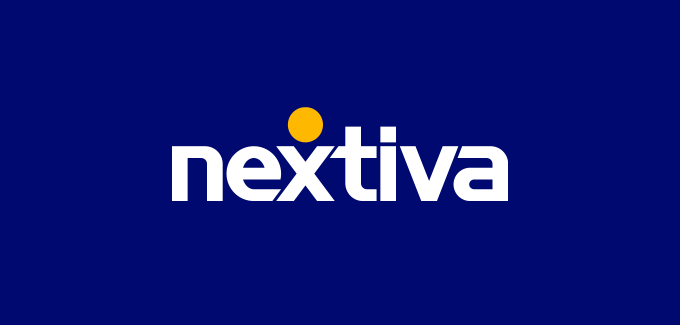
Nextiva is the ultimate all-in-one communication platform for businesses. It seamlessly integrates phone, chat, video meetings, and contact management into a single, easy-to-use suite.
We use Nextiva in our own business because it gives us a virtual business phone number that our team can share. It keeps our communication with customers smooth and professional, no matter where we are. For more details, see our in-depth Nextiva review!
The auto-attendant feature helps guide the call to the right person without delays.
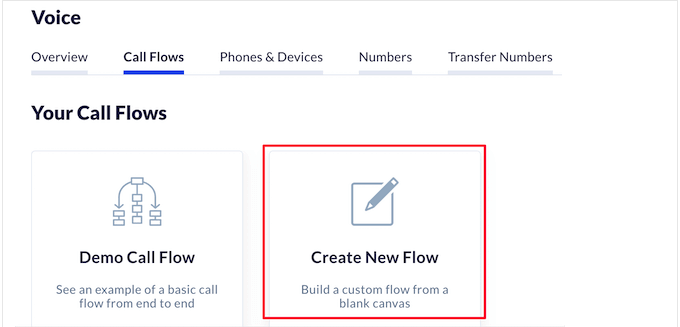
Then, employees can collaborate via chat, SMS, and video calls. I also appreciate that their business phone service offers toll-free numbers, and teams can share the same phone numbers to easily manage contacts and leads.
Another standout feature is video collaboration, including screen sharing and built-in live streaming for hosting workshops and webinars. I like that it allows you to share files during video meetings with just one click.
Nextiva offers easy-to-use automated reminders for teams and customers around forgotten tasks, follow-ups, or check-ins to increase workplace productivity.
Plus, Nextiva has mobile apps for Android and iOS to help you improve teamwork from anywhere.
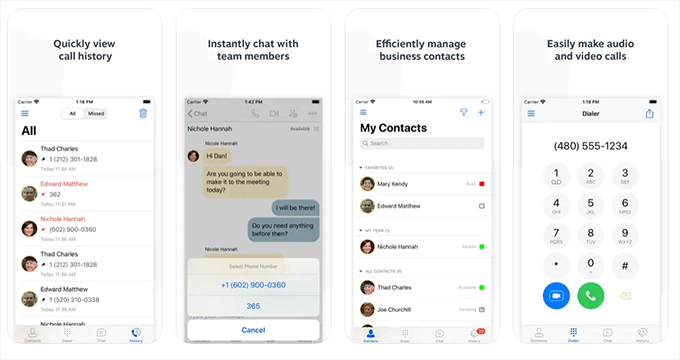
In addition, it integrates with popular calendars, email, Google Workspace, Microsoft Teams, and more.
Pros of Nextiva
- Combines phone, chat, and video in one platform.
- Offers toll-free and shared business phone numbers.
- Includes screen sharing and live streaming for meetings.
- Automates reminders for follow-ups and tasks.
- Works with calendars, email, Google Workspace, and more.
- Mobile apps for teamwork on the go.
Cons of Nextiva
- Advanced features may take time to master.
- Can be pricey for small teams.
Why I Recommend Nextiva: At WPBeginner, we use Nextiva because it simplifies team communication and customer support. Its shared phone number feature and auto-attendant can save you time, while its collaboration tools keep your team productive no matter where they are.
Pricing: Nextiva starts at $21 per user per month when billed annually using our Nextiva coupon.
2. Slack
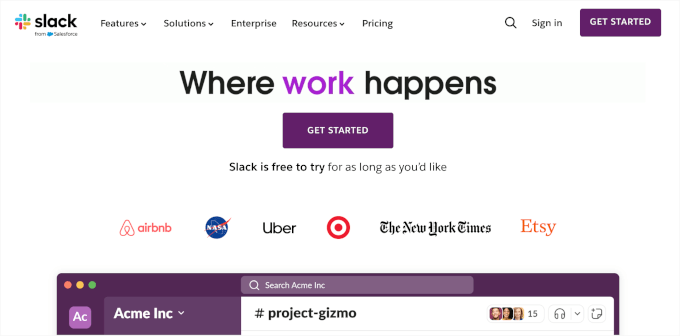
Slack is the most popular messaging app for businesses of all sizes. It is known for its real-time messaging, seamless integrations, and powerful collaboration features.
We also use Slack across our management company, Awesome Motive, because it allows for asynchronous communication across teams. One feature we love is its time zone-aware notifications, which are perfect for our team members spread across 45 countries.
Plus, it’s widely used by many Fortune 500 companies like IBM, T-Mobile, NASA, Target, and more!
Slack offers a digital HQ for businesses and teams, and it’s a great feature for keeping everyone on the same page. This tool also makes organizing our virtual workspace easy.
You can create channels and chat rooms where teams collaborate, share updates, and track progress seamlessly. These features make it much easier to stay organized, especially when working on larger projects.
Team members can also have 1:1 chats, which we often use for quick check-ins or private discussions.
What’s more, you can use Slack Status to let our team know when you’re available, in a meeting, or focused on deep work. This can help reduce unnecessary messages and keep communication clear.
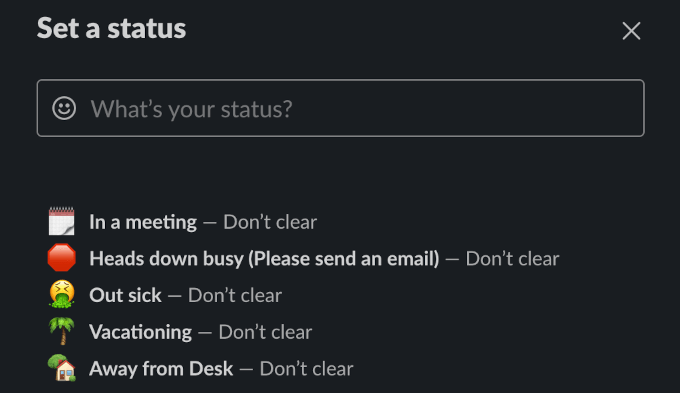
I also love the built-in Huddle feature. Instead of scheduling a full meeting, I can jump into a voice or video chat and get answers in minutes.
And with Slack AI, staying on top of conversations is a lot more effortless. The AI-powered search, summaries, and recaps help cut through the noise so you can find key info faster. We’ve tried it ourselves, and it’s been helpful for catching up on discussions!
In addition, Slack includes integrations with nearly all top productivity tools, CRM software, and virtual phone services.
For example, you can connect Slack and your WordPress website to receive real-time notifications about new form submissions. This is easy to do with WPForms and Uncanny Automator.
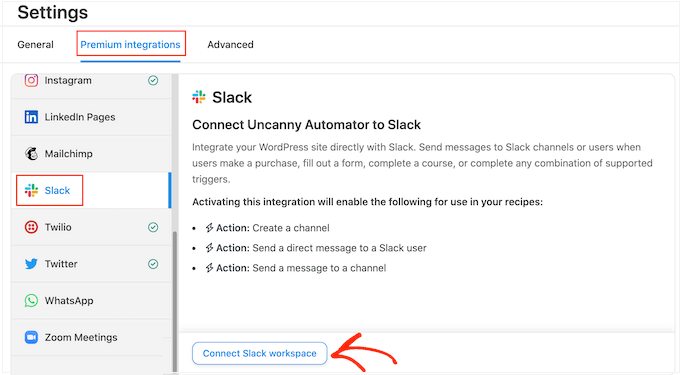
In addition to forms, you can set up automated notifications for comments, customer inquiries, and more to keep your team updated instantly.
Pros of Slack
- Organizes communication into easy-to-use channels.
- Supports 1:1 chats, audio calls, and video updates.
- Works with top productivity tools and CRMs.
- Handles notifications across time zones.
Cons of Slack
- Can feel overwhelming with too many notifications.
- Limited features in the free plan.
Why I Recommend Slack: I like Slack because it keeps our global team connected and organized. Its time zone-friendly notifications are a lifesaver for managing communication across 45 countries. It’s the backbone of our asynchronous workflow!
Pricing: Paid plans start from $8.75 per user per month, billed annually. There’s also a free version that you can get started with, but it comes with limited features.
3. Google Workspace

Google Workspace brings all your essential productivity tools – Gmail, Drive, Meet, Chat, and more – into one seamless platform. It’s perfect for startups, remote teams, and growing businesses looking to streamline communication and workflow.
I’ve been using Google Workspace for my business email address for a long time, and we also use the suite of tools across our remote company. It gives you the familiar Gmail and Google Calendar interface, which is easy to use.
Please see our detailed Google Workspace review to learn more about how you can use it to improve team communication!

You can use your own domain name to set up professional business email addresses for yourself and your team. It’s an easy way to keep your brand looking polished and legit!
We also use the Shared Drive feature for cloud storage, which is great for access control on documents and media files.
What’s more, the quality of Google Meet calls has improved drastically. It’s one of the reasons why we canceled our Zoom subscription and are using Google Meet for our team meetings.
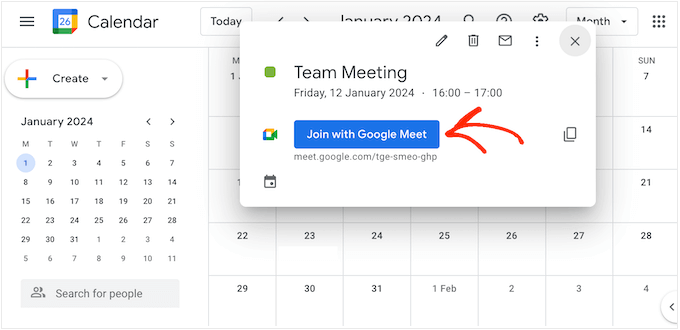
Plus, your data will be hosted on Google’s cloud infrastructure. This makes it fast, reliable, and an extremely secure internal communication tool.
Pros of Google Workspace
- Professional business email with your domain.
- Familiar Gmail and Calendar interface.
- Secure and reliable cloud infrastructure.
- Shared Drive for easy file access control.
- Improved Google Meet for group meetings.
Cons of Google Workspace
- Can get expensive for larger teams.
- Lacks advanced collaboration features in free tools.
Why I Recommend Google Workspace: Our business has used Google Workspace for over a decade because it keeps everything seamless, from business email to shared storage. With its improved Google Meet, we even dropped Zoom for team meetings.
Pricing: Starting at $6 per user per month.
4. HubSpot

HubSpot is a business communication suite that combines CRM software, sales, and marketing tools. It’s a great fit for growing businesses, startups, and sales-driven teams looking for a streamlined way to manage customer interactions and drive conversions.
We use HubSpot to organize our partnership contacts, and it acts as a single source for our various teams. Overall, I strongly recommend HubSpot as one of the best communication tools to consider. For more details, you can see my full HubSpot review!
During setup, I especially liked how easy the dashboard was to use. It makes managing leads and customers a breeze by centralizing everything in one place.
When it comes to onboarding, you can start by importing XLS or CSV files from your computer, importing a list of blocklisted people, or using a past import as a reference.
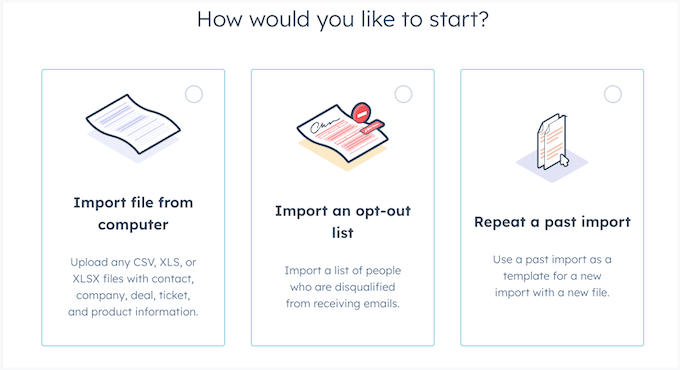
Unlike other tools, HubSpot doesn’t come with built-in team chat, audio, or video calls – but don’t worry, that’s not really its focus.
What really stands out is how seamlessly it connects sales and marketing teams. This makes it a great tool for keeping sales teams aligned, streamlining collaboration, and helping businesses nurture leads more effectively.
Pros of HubSpot
- Powerful sales and marketing dashboard.
- Great for managing leads and customers.
- Keeps teams aligned with one source of truth.
Cons of HubSpot
- No chat, audio, or video calling features.
- Focused more on sales and marketing than team communication.
Why I Recommend HubSpot: HubSpot is a great tool for organizing partner contacts. It helps our teams stay connected and ensures nothing falls through the cracks, making it an essential tool for managing relationships effectively.
Pricing: There is a limited free account and paid plans for marketing, sales, and customer service software, with different pricing for each.
5. Asana
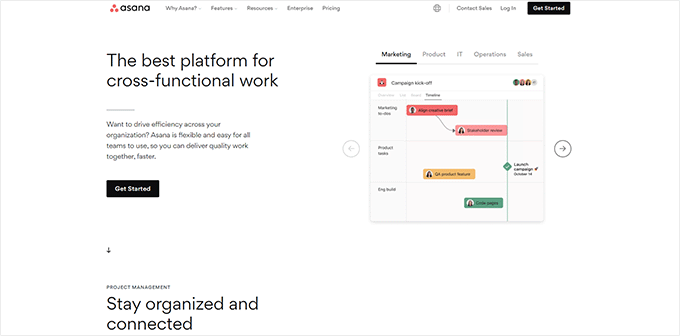
We’ve tried our fair share of project management tools. From simple to-do lists to complex software, we’ve experimented with them all. But when it comes to keeping our team on track and our projects organized, Asana is our clear winner.
It gives our team a central hub for managing all our tasks, projects, and deadlines, and I personally like how it helps us all stay on track.
One of the things I appreciate most about Asana is its flexibility. Whether you prefer lists, timelines, Kanban boards, or card views, Asana lets you visualize your work in a way that makes sense for you and your team.
And while it doesn’t have built-in chat or video conferencing, all our project-related communication happens within Asana, keeping everything organized and in context. I especially love that each task can have its own dedicated thread, so nothing gets lost in the shuffle.
Asana also integrates seamlessly with other tools I use daily, like the Asana extension for Google Chrome, which lets me quickly add tasks from any webpage or email.
The automation features, like templates, rules, forms, and approvals, are also a huge time-saver, allowing our team to streamline our workflows and focus on what matters most.
Pros of Asana
- Amazing for task and project management.
- Helps streamline workflows and track project progress.
- Offers multiple views like lists, timelines, and Kanban boards.
- Includes automation tools like templates and rules.
- Integrates well with other productivity tools.
Cons of Asana
- No chat, SMS, or video conferencing features.
- Communication is limited to task-related threads.
Why I Recommend Asana: Asana is hands-down the best project management tool out there. At WPBeginner, it keeps our projects organized and on track while making collaboration effortless. After trying other tools, Asana stands out as the best for managing remote team workflows and ensuring nothing gets overlooked.
Pricing: Free and paid plans start at $10.99 per user per month.
6. RingCentral
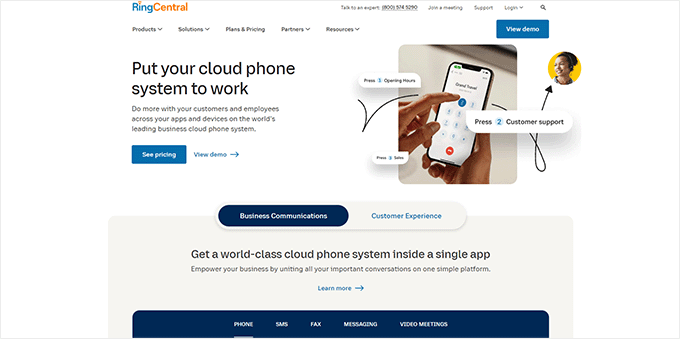
RingCentral is one of the top business team communication toolkits, providing virtual phone numbers, calls, and SMS. It’s perfect for customer support teams, remote businesses, and enterprises needing a reliable, cloud-based phone system to stay connected.
If you’re frustrated with juggling discussions, emails, and resources across multiple platforms, then RingCentral is a great solution to streamline your small business communication. We did a deep dive into its features, which you can see in our RingCentral review.
Their business communication suite includes phone, SMS, online fax, video for virtual meetings, messaging for internal team communications, and more.
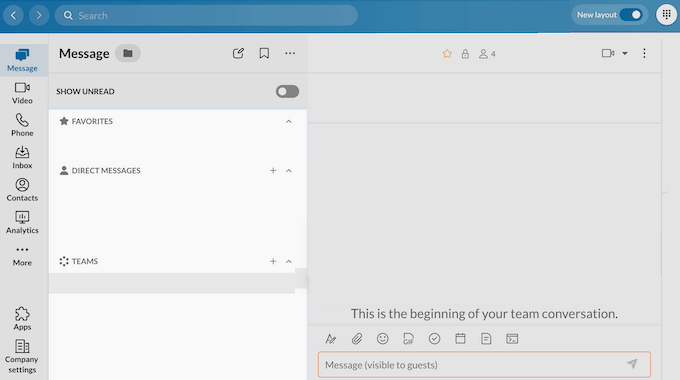
For sales and marketing teams, they offer rich insights, quality-of-service reports, and comprehensive alerts.
Integrations are available for Google Workspace, Office 365, popular CRM software, and marketing platforms. You can easily find these apps in the RingCentral App Gallery page.
In my experience, integration with Google Workspace is seamless, making it easy to sync files and contacts. This truly eliminates the hassle of manual updates and data transfers.
Pros of RingCentral
- Combines phone, SMS, video meetings, and messaging in one toolkit.
- Offers insights, reports, and customizable dashboards for sales and marketing.
- Integrates with Google Workspace, Office 365, and popular CRM tools.
- Simplifies team communication by keeping everything in one platform.
Cons of RingCentral
- Could feel overwhelming if you only need basic features.
- Requires setup time to customize dashboards and integrations.
Why I Recommend RingCentral: This communication suite is perfect for keeping everything streamlined and organized. RingCentral eliminates the chaos of juggling multiple platforms, making it a reliable hub for your team’s discussions and collaboration.
Pricing: Pricing starts at $20 per user per month, and you get unlimited domestic calling, SMS, and MMS. You’ll need to upgrade to their Advanced or Ultra plan if you need more features like auto call recording, advanced call analytics, unlimited storage, and AI-powered meetings.
7. Microsoft Teams
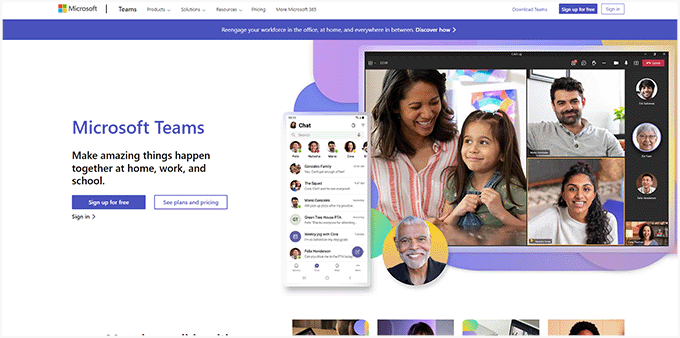
Microsoft Teams is a powerful collaboration tool built for businesses using Microsoft 365. It integrates seamlessly with Outlook, SharePoint, and OneDrive, making it ideal for remote teams and enterprises.
Microsoft Teams is a Slack alternative. With team channels, private chats, and video conferencing, it centralizes communication and workflows.
During testing, I loved how smoothly it works with Office 365. Team members can open, edit, and review files right inside Teams, so there’s no need to jump between apps – everything stays in one place.
I also found that Microsoft Teams makes video conferencing super intuitive. A live meeting icon at the top lets everyone know when a call is in progress, and joining is as easy as clicking the invite.
One feature I particularly like is the shift management tool. It’s handy for managers to create and adjust shifts, manage time-offs, and assign tasks efficiently.
Pros of Microsoft Teams
- Supports teams, channels, private chats, and video conferencing.
- Seamless integration with Office 365 for file sharing and editing.
- Superior video conferencing with easy join-in options.
- Includes shift management features for scheduling and time-off tracking.
Cons of Microsoft Teams
- Works best if your team already uses Office 365.
- The interface can feel cluttered for new users.
Why I Recommend Microsoft Teams: It’s a great communication tool thanks to its seamless integration with Office 365. The built-in video conferencing and shift management tools make it super handy for staying connected and organized, especially for teams juggling projects and schedules.
Pricing: Free and paid plans start at $4 per user per month or $6 per user per month with Office 365. It includes Microsoft Teams, Outlook, PowerPoint, OneDrive, and more.
📌 Related: You may want to check out our article on Google Workspace vs. Office 365 if you’re having trouble deciding between the two.
8. Zoom
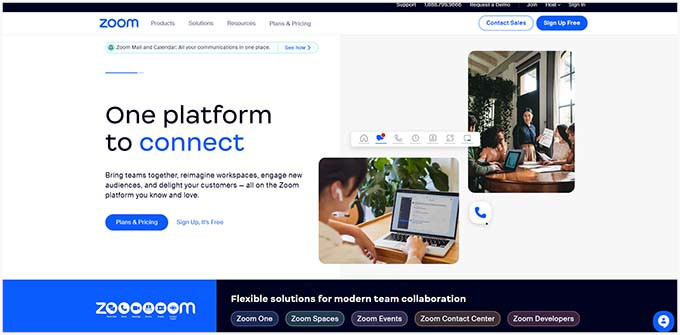
Zoom is a popular video meeting tool known for its reliable, high-quality video and chat features. It’s a go-to solution for businesses, educators, and government organizations that need seamless video conferences.
Zoom truly shines in large meetings with 100+ participants, especially when using random breakout rooms. Thanks to its reliability and high-quality video calls, it’s also a solid choice for customer webinars.
Beyond video calls, Zoom also offers business phone services, email, and calendar integration.
We used to use Zoom in our own business. But as the quality of Google Meet has improved, we switched away from Zoom to reduce costs for our business.
The cost of Zoom really adds up once you go above 10 users in your organization, and then again when your organization grows to 100+ users.
Pros of Zoom
- Reliable video meetings with high-quality calls.
- Great for large meetings with 100+ participants.
- Random breakout rooms for better interaction.
- Perfect for hosting customer webinars.
Cons of Zoom
- Costs rise quickly as your team grows.
- Limited functionality for small teams compared to other tools.
Why I Recommend Zoom: Zoom is a great team communication tool for large team meetings and webinars. It has unmatched reliability and breakout room features!
Pricing: It comes with a limited free plan for 1 user only. The paid plans start at $159.90 per user per year, but the per-user pricing increases after 99 users.
9. Chanty

Chanty isn’t just another team chat app – it’s a full-fledged collaboration hub with built-in project management. It’s perfect for small businesses and remote teams that want an easy way to communicate.
One feature that stood out to me during testing was the ‘Teambook,’ which gives you a quick overview of everything happening across the organization.
Here, you can set up chatrooms or channels for different teams. This makes it super easy to stay updated on team activities and project progress without feeling overwhelmed.
I also found Chanty’s ability to create tasks on the fly very useful for task management. Whether I was viewing tasks in lists or Kanban view, assigning tasks and tracking progress was very easy.
Pros of Chanty
- Combines chat, video conferencing, and task management.
- Chatrooms and channels keep team conversations organized.
- The Teambook feature gives a clear view of all activities.
- Tasks can be created quickly and viewed in lists or Kanban boards.
Cons of Chanty
- Lacks advanced integrations compared to bigger tools.
- Limited scalability for very large organizations.
Why I Recommend Chanty: Chanty is a fantastic option if you want a simple yet powerful communication and project management tool. Its Teambook feature keeps everything in one place, making it easy to track conversations and tasks in real-time.
Pricing: Chanty has a limited free forever plan, and paid plans start at $3 per user per month, billed annually.
10. Ryver
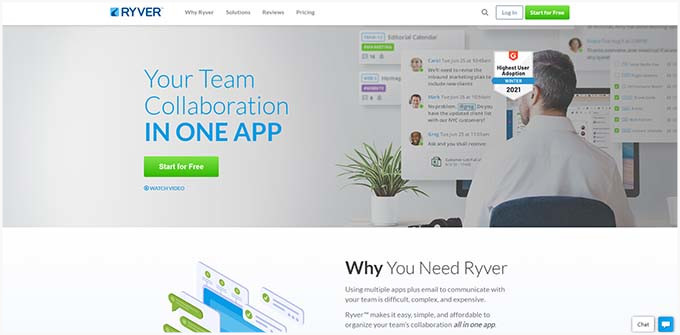
Ryver is a business communication platform that blends messaging, task management, and audio/video calls into one seamless app. It’s a great fit for teams looking to streamline collaboration without juggling multiple tools.
During my testing, I particularly liked the SSO Single Sign-on feature, which made logging in effortless because you can use the same credentials across your organization. This can save you a bunch of time.
Smooth integration options are also available for popular productivity and CRM software. When I tested it, connecting with tools like Google Workspace and Salesforce was quick and easy.
Pros of Ryver
- Combines messaging, task management, and calls in one app.
- Single Sign-On (SSO) for easy team access.
- Integrates with popular productivity and CRM software.
Cons of Ryver
- Limited advanced features compared to bigger platforms.
- Could be too basic for larger teams with complex needs.
Why I Recommend Ryver: I included Ryver in this list because it’s perfect for teams that need a simple, all-in-one communication tool. Its integration with productivity and CRM software, plus the ease of SSO, makes it a great choice for keeping everything organized and accessible in one platform.
Pricing: Starting at $34.50 per month for up to 12 users.
11. Flock

Flock combines messaging, voice/video conferencing, to-dos, and file sharing in one platform. It’s ideal for startups and small businesses looking for an affordable Slack alternative.
Flock is one of the most effective tools for organizing teams into groups. You can customize each group with its own to-dos and in-line file sharing.
I also like Flock’s integration with popular productivity suites. This can keep all team discussions and documents in sync without the need to switch between platforms.
Pros of Flock
- Voice/video conferencing, chat, and file-sharing.
- Organize teams into groups with tasks and video conferences.
- Real-time collaboration with top productivity suite integrations.
Cons of Flack
- Less popular than Slack, with fewer user resources.
- Not as feature-rich for larger teams.
Why I Recommend Flock: If you’re hunting for an affordable Slack alternative, Flock is a great option, thanks to its solid communication and task management in one app. It’s easy to use and offers real-time collaboration tools.
Pricing: It comes with a limited free plan, and paid plans start at $4.50 per user per month.
12. Zoho Cliq

Zoho Cliq is a team communication tool built by the creators of Zoho’s business software suite. It seamlessly integrates with Zoho CRM, Notes, Calendar, and Email, making it a great choice for businesses already using Zoho products.
I tested Zoho Cliq for real-time team collaboration, and it delivers exactly what you’d expect. The team chat feature, along with group chats, video chat, and voice calls, makes it easy for team members to stay connected throughout the day.
I also tried using the project management tools, and the interface was intuitive, allowing you to create tasks and track progress quickly.
Another feature that stood out to me was the seamless integration with Zoho’s other apps, like Zoho CRM and Zoho Projects. It also has a wide range of third-party software integrations.
Pros of Zoho Cliq
- Team chat, group chats, video calls, and voice calls.
- Strong project management features.
- Seamless integration with Zoho apps and third-party tools.
Cons of Zoho Cliq
- Best suited for teams already using Zoho software.
- The interface can be overwhelming for new users.
Why I Recommend Zoho Cliq: It’s a great Slack alternative, especially for teams already using Zoho’s suite of apps. It offers solid communication tools, integrates smoothly with other Zoho software, and provides everything needed for efficient team collaboration in one platform.
Pricing: Limited free plan, paid plans start from $1.80 per user per month.
13. Dialpad

Dialpad is a cloud-based platform designed for teams and customer support. With VoIP calling, messaging, group chat, and video conferencing, it’s an excellent choice for businesses that need a reliable all-in-one communication solution.
It offers an omnichannel customer engagement platform as well, which comes in handy for sales teams to follow up with leads.
The integration with Google Workspace and Office 365 also works smoothly. For example, you can sync your contacts and calendars without any issues.
One standout feature I appreciated was the ability to get local numbers in over 70 countries. I think this feature can be especially useful for global teams, as it makes communicating with international clients feel much more accessible.
Plus, its AI-powered voice intelligence truly sets it apart, which helps improve calls with real-time transcription and smart insights.
Pros of Dialpad
- VoIP service, messaging, group chat, and video conferencing.
- Omni-channel customer engagement for sales teams.
- Integrates with Google Workspace and Office 365.
- Local numbers available in 70 countries.
Cons of Dialpad
- Focused more on customer support and sales.
- Limited features for non-sales teams.
Why I Recommend Dialpad: If your teams need seamless communication and customer engagement tools, Dialpad is a great choice. Its VoIP service, along with integrations and local number support in multiple countries, makes it perfect for global teams and sales-driven businesses.
Pricing: Starting from $15 per user per month, billed annually.
14. GoTo Meeting

GoTo Meeting is a solid choice for businesses that need hassle-free webinar software and a video conferencing platform. It’s super easy to set up and use, whether you’re meeting with your team, chatting with clients, or hosting a presentation.
The GoTo Connect suite provides phone, text, and meetings for real-time communication. This allows teams to follow up with leads, offer customer support, and stay in touch with chat and text.
The add-on solutions, especially those tailored for businesses offering remote IT support, caught my attention, too.
I tested a few of them, and they were great for supporting clients remotely and speeding up your business workflows.
Pros of GoTo Meeting
- Easy-to-use interface for video meetings.
- GoTo Connect suite includes phone, text, and meetings.
- Great for following up with leads and offering customer support.
- Add-on solutions for remote IT support.
Cons of GoTo Meeting
- Limited features beyond communication.
- Not as versatile for non-IT businesses.
Why I Recommend GoTo Meeting: GoTo Meeting is perfect for businesses needing reliable video meetings and communication tools. Its GoTo Connect suite makes it easy to stay in touch with clients and teams through phone, text, and meetings, making it especially useful for remote support and customer service.
Pricing: GoTo Meeting offers a free trial for some products. Paid plans start at $12 per organizer per month, billed annually.
⚠️ Disclaimer: I also looked into other team communication software like Zendesk, Salesforce, Jira, Dropbox, Troop Messenger, and so on. But, I decided it wasn’t best to include them because I don’t want to cause choice paralysis.
What Are the Best Team Communication Tools for Small Businesses?
Whether you’re looking for a simple team chat app, a video meeting platform, or a full-blown project management solution, there’s something out there for you.
Need a business phone system? Nextiva is my top pick, giving you VoIP calls, team messaging, and video meetings all in one place.
For team chat and collaboration, Slack stands out for easy-to-use messaging, file sharing, and integrations.
If staying organized is your top priority, then check out Asana for project management. They make tracking tasks, deadlines, and workflows a breeze.
For video meetings and webinars, Zoom is known for its reliability. But if you want a tool that also ties into your productivity suite, then Google Workspace might be a better match.
Need a sales and marketing communication tool? HubSpot is perfect for teams that want to manage customer relationships, automate tasks, and keep sales and marketing on the same page.
Frequently Asked Questions About Business Communication Tools
We’ve been a fully remote company since day one in 2009 – long before it became the norm. With over 16 years of experience managing a distributed team, we know what works (and what doesn’t) when it comes to team communication.
Along the way, we’ve also helped thousands of users find the best tools to keep their teams connected. Below are the answers to some of the most frequently asked questions.
What communication tools are most effective in working closely with the team?
Whether you’re working closely with a remote team or an in-house team, here are the best team communication tools:
- Google Workspace – Email is essential for working closely with a team. Google gives you Gmail, Calendar, and Google Drive for file sharing.
- Nextiva – Essential for phone calls, SMS, and video conferencing tools.
- Slack – Best for group chat. However, for small teams, you can get away with using a simple messaging app like WhatsApp.
- Asana – Top project management tool.
What is the most effective communication method for remote teams?
For remote teams, the most effective communication method is a combination of written communication and verbal face-to-face communication over video calls.
The most effective method for remote team check-ins is virtual check-in software like Standuply, which integrates seamlessly with Slack and is completely asynchronous.
What is the best team communication tool for online collaboration?
The best team communication tools for online collaboration are Google Workspace and Zoom. With Google Suite, you get Google Docs, Spreadsheets, and Slides, all of which allow for collaborative work. Their built-in comment feature is really good.
You can also use Zoom Whiteboard, which is an excellent virtual communication tool for collaboration and brainstorming.
What is the best team communication tool for asynchronous communication?
The best asynchronous communication tools are:
- Slack – Great for instant messages and group messages. It gives users full control over their time zones and notification preferences. You can also schedule direct messages to be sent at certain times in the different team members ‘ time zones.
- Email – Great for asynchronous communication.
- Loom – Allows you to easily record videos and screencasts that your team members can watch.
- Droplr – Allows you to create screenshots or quick screen recordings to communicate with team members.
💡 Need Hands-Off WordPress Management?
Great communication tools keep your team connected – but what about your website? Keeping WordPress updated, secure, and running smoothly is just as important for your business.
With WPBeginner Pro Maintenance Services, you get 24/7 monitoring, security fixes, routine backups, and updates – so your site stays fast, secure, and worry-free. Starting at just $49/month!
We hope this article helped you find the best team communication tools for your business.
Next up, you may also want to see our expert picks of must-have tools to manage and grow your business and learn how to grow a small business on a shoestring budget.
If you liked this article, then please subscribe to our YouTube Channel for WordPress video tutorials. You can also find us on Twitter and Facebook.





Dennis Muthomi
I use Google Workspace in my small business because I find the Google app ecosystem very convenient and easy to use.
Apps like Calendar, Docs, and Drive integrate nicely, and having Meets means I don’t have to pay extra for a separate video conferencing tool.
The familiar interfaces also make adoption smoother across my team.